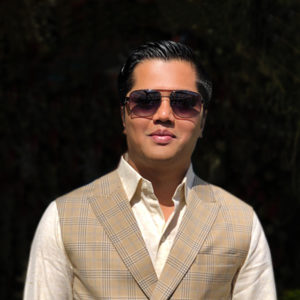Agile Approach For eLearning Development
Most training developers are familiar with ADDIE, the linear framework for building effective training solutions. Like anything in this world, ADDIE has its strengths (easy to understand and communicate, straightforward development phases) and its weaknesses (fairly rigid, has challenges incorporating changes in requirements late in the process).
In the past decade or so, new development models have emerged to address the weaknesses commonly ascribed to the ADDIE model. One of the better-known successors is SAM (successive approximation model). Another, which was originally imported from the software development world, is Agile.
Agile has taken root in the eLearning industry because it addresses one of the fundamentally difficult challenges in eLearning development: namely, how to address late-breaking changes in requirements. An Agile approach can increase flexibility to a project while keeping the same deadline and budget, resulting in happy stakeholders and increased morale. However, not every project or organizational culture is a perfect fit for Agile.
What is Agile and where did it come from?
A dozen or so software project managers realized they needed a radically different approach to project management in the late 1990s. In 2001, they got together and wrote The Agile Manifesto to codify their values. That really got things going. Today, Agile is the dominant project management approach in the software world (actually there are several Agile approaches) and it’s starting to spill over to other fields.
When you’re following in Agile approach, you are continually responding to changes in requirements and to customer feedback as you frequently release new iterations of your product. In one of my workshops, a student commented that with Agile you come to expect and accept change. That’s really the best description of it that I can find.
Agile doesn’t mean that the project takes more (or less) time or resources to complete it. I would posit, however, that an Agile project is more likely to deliver what is actually needed by the client – even if that need changes over time – than a traditional Gantt chart approach with tight sign-offs at each step.
Why would you follow an Agile approach to developing eLearning?
eLearning, software development, and a number of other project-based activities follow a similar path. In a nutshell, a business sponsor makes a request, you design something, you build something, you deliver something. So it’s not such a crazy idea that we’d learn from and adapt each other’s models for project management (and other aspects of daily life).
When you think of it, eLearning is like software development in that we’re often building something unique to support the organization. Business sponsors can’t articulate all of their needs and desires at the beginning of the project. It’s likely that the organization's underlying needs will change along the way, too, and we want to be responsive – not resistant – to those changes. Each of these situations offers a compelling reason to adopt Agile methods.
What advice would you give an individual or a team that's looking to adopt an Agile approach for eLearning development?
Start with learning: Learn what other Agile teams (likely technology teams) in your organization are doing, learn from others who use Agile for instructional design. The two perspectives – IT’s Agile and ID’s Agile – are different, but related. Keep in mind that each team implements Agile in a way that is specific to their culture: you won’t be able to completely lift one approach and drop it into another organization and expect it to work.
- Choose a project
Find a project that’s about to get underway, with a willing project sponsor and a willing team. That’s the best combination to get results while experimenting with the approach in your own culture. - Continue with learning
Help project sponsors, SMEs, your team, subcontractors, and anyone else you’ll work with, understand how you work now and what support you’ll need from them. - Take stock
Take time to debrief and fine-tune your processes. Take time to share what you’re doing with others so you can learn.
From an organizational standpoint, what is the best way to 'sell' agile to stakeholders and management?
Not that you’d ever want to engineer it this way, but adopting an Agile approach seems like a pretty good idea right after a project failure: one in which the team was over budget, late, or just missed the mark.
Take an Agile approach to it: sell an experimental, first project. See how it goes. Nothing sells like success.
If your IT organization already uses Agile, follow their lead and ride their coattails. They’ve all drunk the Kool-Aid and they can support your own implementation.
Are there any tools or equipment that can help an organization become Agile-ready?
Some teams use online Agile tools; others just use 3x5 cards and corkboard. I find that the more visual and prominent you can make your planning boards (as long as they are up to date!), the easier it is to remind people of what you’re doing and how you’re holding yourself accountable for the work.
You mentioned earlier that each team implements Agile in a way that is specific to their culture. Can you expand on that idea? Do you have any examples from your consulting work that would illustrate that?
A team’s work processes and culture are inextricably linked with the overall organizational processes and culture. Since Agile requires what I call a “full contact approach” to project management, where subject matter experts, project sponsors and future learners are all involved, it can’t be implemented in a vacuum.
As such, each team will make minor adjustments to a “traditional” (if one exists) Agile process to make it work within their organization. This might mean minor shifts in terminology, the length or nature of sprints and iterations, how the training team works with other teams, and so on. For example, the company I learned most of my Agile processes from uses much larger tasks and stories (including week-long ones) than my team uses (we plan at a 1-4 hour level). It’s just what works for our teams vs. theirs.
Where do you think the industry is headed? Are Agile and Llama models going to continue to take root and become standard in the eLearning industry? If so, where does that leave ADDIE?
I’ve often been asked if Agile is the flavor of the month. I really don’t believe it is. For one, it’s been around formally since 2001 (an eternity in Internet years!) and it’s becoming the dominant project management method in the software industry. The underlying needs that drove the development of Agile – faster and faster rates of change – are only becoming more and more relevant to our work as instructional designers and developers.
Is it the last innovation in project management ever? I hope not. But we’re certainly not slipping backward!
******
Megan Torrance is the CEO (that is, Chief Energy Officer) of TorranceLearning, an eLearning design and development firm with an intentionally random client base. She is devoted to not only delivering outstanding work to clients, but also creating a top-notch work environment based on trust, flexibility, compassion, and fun.
TorranceLearning is based outside of Ann Arbor, Michigan. Learn more about Agile development at Megan Torrance’s company website at www.TorranceLearning.com or follow her on Twitter at @MMTorrance.









